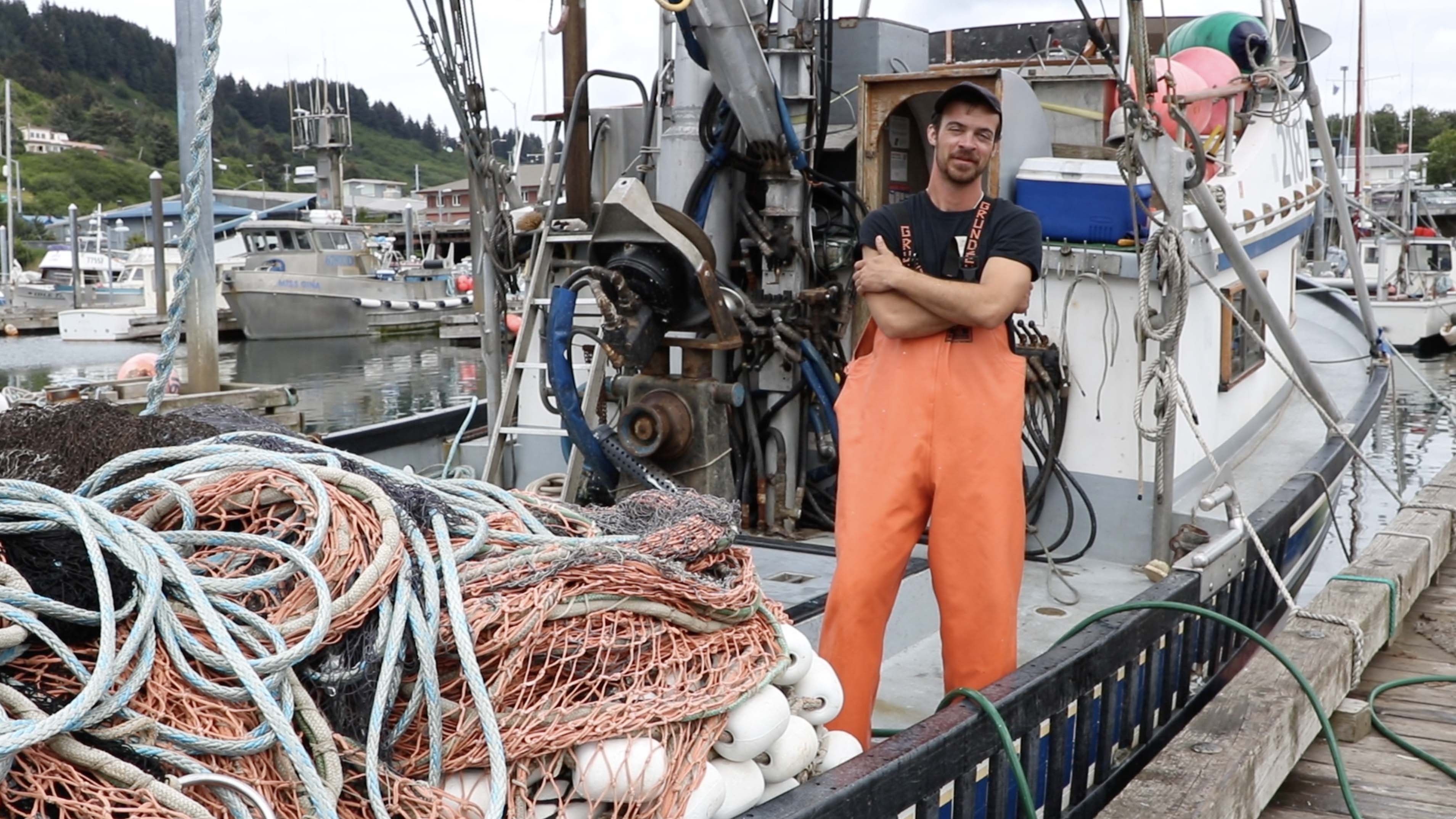Alaska’s Blue Economy Could Benefit from Blockchain
January 11, 2022

By Kevin Huo
In a world of rapidly evolving technology, Justin Sternberg and Jody Edmondson are exploring ways to use the cloud to examine the seas. As researchers with the Alaska Blue Economy Center (ABEC), Sternberg and Edmondson are investigating the applications for blockchain in the seafood supply chain.
The Alaska Blue Economy Center is an interdisciplinary partnership among the UAF College of Fisheries and Ocean Sciences, ACEP, College of Business and Security Management, and Alaska Center ICE. These groups are working together to build bridges between the University’s substantial research expertise and the state’s maritime industries to meet the changing needs of Alaska’s aquatic economy.
Alaska Center ICE Seed Fund recently granted Sternberg and Edmondson funding to develop a white paper that studies industry priorities, opportunities for computer science development, and lays a road map for future collaboration and innovation. The proposal, Blockchain: Implications for Alaska’s Seafood Industry, aims to define the near-term solutions, including provenance and frictionless operationally efficient transactions, as well as broader methodologies including the valuation of ecosystem services and climate adaptation.
A blockchain is essentially a digital ledger of transactions that is duplicated and distributed across the entire network of computer systems on the blockchain in a way that makes it difficult or impossible to change, hack, or cheat the system.
Alaska’s premium wild seafood brand stands to benefit from the transparency, compliance, and coverage the blockchain technologies that Sternberg and Edmondson describe can provide. Blockchain technologies have the potential to mediate seafood supply chain challenges and allow the industry to leapfrog legacy issues including lack of sufficient workforce and long-in-the-tooth record keeping systems, while allowing a more agile approach to the integration of technologies such as automation.
Consider the provenance of a fish you may purchase to eat: where was it harvested, processed, and shipped to and from? Consumers are increasingly demanding more insight, while large retailers such as Costco, Walmart, and Whole Foods are responding by implementing far-reaching compliance measures from their suppliers. Alaska’s science-based management practices and world-class wild fisheries already have a leg up and at the same time must be fully prepared to compete on these terms.
When thinking about the ocean, high-tech and trackable data doesn’t immediately jump to mind, but blockchain, essentially a distributed ledger, can advance understanding of the fishing industry and help with managing resources and providing an immutable set of data that can inform nodes within the supply chain that ultimately benefit consumers.
Edmonson describes their work as democratizing the mass data by building a relationship between the fish and the consumer. This simplifies the extraneous reliance on intermediaries, strengthening trust, brand, and the ‘Bait to Plate’ concept. For example, an early implementation of the technology involves RFID (Radio-Frequency Identification) tags attached to fish (either in batches or individually, depending on the end use) the moment it leaves the water.
As the fish travels through the supply chain, at crucial moments RFID sensors indicate locality, temperature, identification, and any other essential points of reference. All the while, the sensors are logging what is occurring and sending that information to the blockchain. This data is then available for the seafood industry to maintain quality and, to the extent it chooses, to tell the end consumer why Alaskan fish is superior.
Sternberg and Edmonson describe future use cases where a consumer walking into a grocery store with augmented reality glasses is able to see on a map where their fish was caught, assess environmental and social benefits, quality metrics, and even be guided to choose tasty recipes.
Through its engagement with industry stakeholders, ABEC is helping position Alaska for the future. Alaska Center ICE is excited to be partnering with these researchers and looking forward to the project’s development.
For more information on the Alaska Blue Economy Center or the blue economy futures project, please contact Justin Sternberg at jcsternberg@alaska.edu.
Find out more about the Center ICE Seed Fund at https://uaf.edu/centerice/seed-funding/. For more information, please contact Peter Webley at pwwebley@alaska.edu. The seed fund opportunity is funded with support from the Office of Naval Research.


